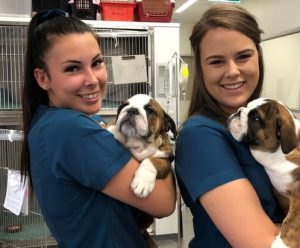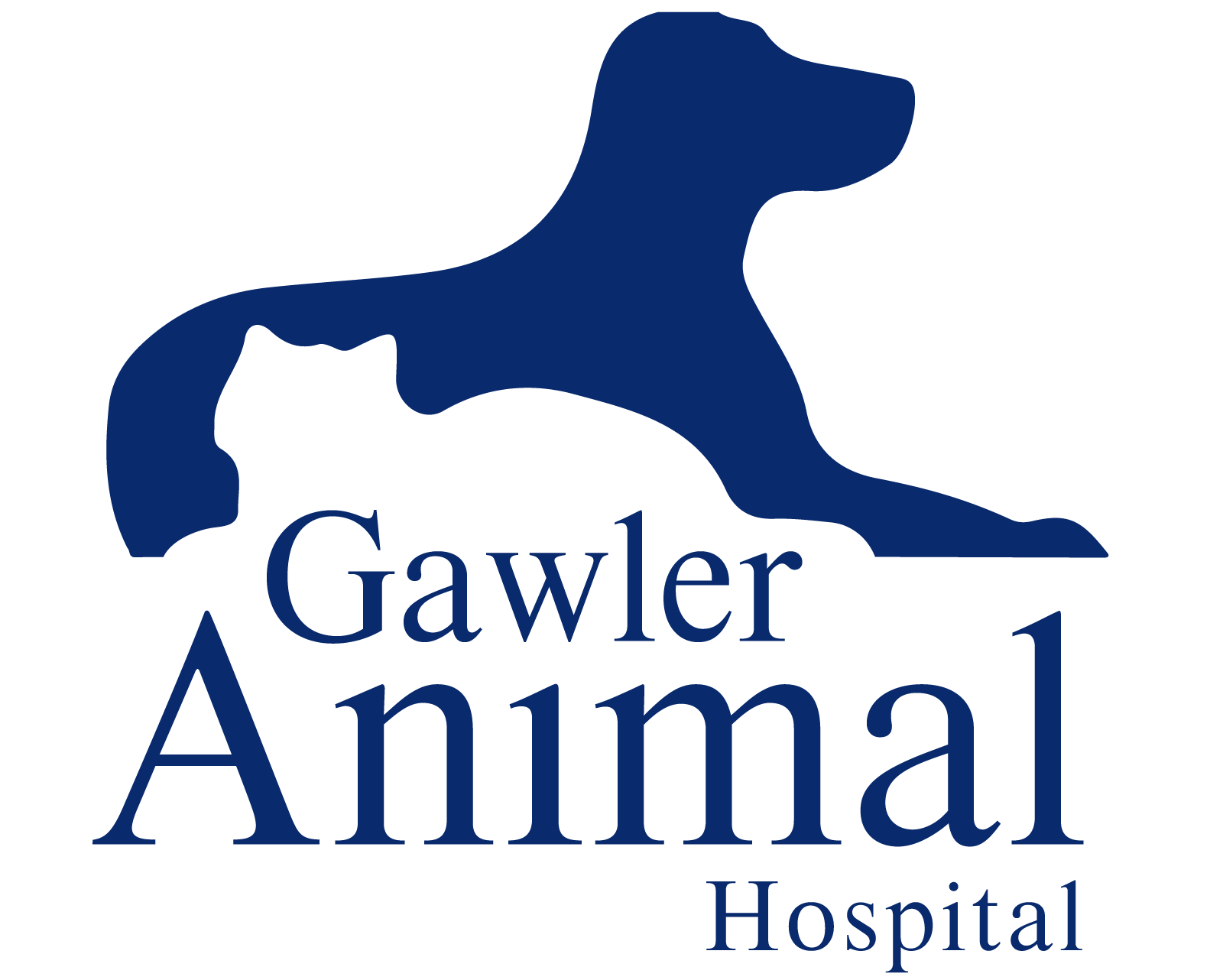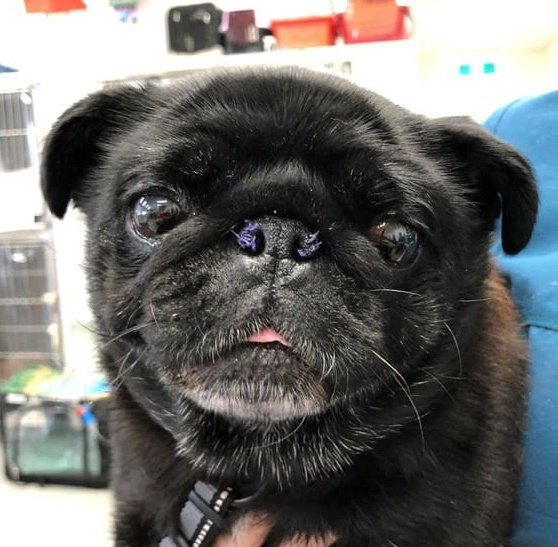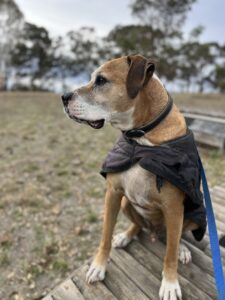There’s a problem that has developed, over time, with some dog and cat breeds which we could loosely call ‘Flat-Face Syndrome’. In more technical terms, this is ‘Brachycephalic Syndrome’ – my Latin teacher would have translated this, more or less, as ‘short-headed’.
You know the common breeds and have seen them around for years. Bulldogs, Pekingese and Pugs feature prominently in the dog world while ‘Persians’ and British Shorthairs come to mind in cats. The condition relates to the squashed-in faces that are a feature of the appearance of these breeds, but which can actually cause these animals a significant degree of difficulty throughout their lives.
These breeds haven’t always been troubled by the syndrome, however. If you look at pictures from the 1800’s, Bulldogs were a very different-looking breed of dog. Their faces were longer and they were much less heavy-set. As working farm dogs, this conformation would have been much more suitable than the current build. The problem has developed over many years to a large extent because of fashion – people just love the look of those squashed-in faces and you have to admit they have character! Any breed which becomes fashionable is prone to the dangers of over-breeding. Breeders without the necessary knowledge or devotion to the breed (think ‘puppy/kitten farmers here) become involved, and turn out multiple litters of puppies and kittens with little thought as to the genetic problems they may be causing. Unfortunately this is exactly what’s happened with some of these breeds we’re discussing.
I was prompted to write a story about this when we had a little Pug – ‘Bella’ Peacock – present for surgery this week. Bella was an eleven-year-old rescue dog who came to Yvonne and Brad earlier this year. When we examined her, it was apparent that she was struggling with her breathing. Dr Steve has now carried out surgery and Bella is feeling a lot better already!
Ok, what’s the problem with this condition and what can we do about it? Along with the outward appearance, Brachycephalic animals often have an altered respiratory tract and so struggle to breathe. This is particularly apparent when they exercise or in hot weather.
Let me give you a little more detail on the implications of Brachycephalic Syndrome.
- The problem is generally confined to what we call the Upper Respiratory System
- The nose, the nostrils, the soft palate, the pharynx (the back of the mouth), the larynx (voicebox) and the trachea (the windpipe).
- A narrowing of the nostrils reduces air intake through the nose
- Think what’s it like to breathe when you have a cold and a blocked nose – this is how it feels every day for affected pets!
- Try going for a run whilst breathing through a couple of straws – not easy!
- Soft palate elongation interferes with the normal function of the larynx (voicebox).
- The soft palate is a soft-tissue flap forming the back part of the roof of the mouth.
- In ‘Squishy-faced animals, this is often elongated and prevents the larynx from opening up properly
- Pets affected by this make a lot of noise – sounds a bit like snoring but whilst awake.
- The larynx is often very small relative to other breeds.
- Again, this reduces airflow to the lungs
- The trachea (windpipe) is markedly smaller than in other breeds
- Under general anaesthetic, we often use the same size of endo-tracheal tube in a 30kg Bulldog that we would use in a 4kg Chihuahua!
- Any weight gain in these animals represents a major problem
- Excess fat deposition occurs in the pharynx (back of mouth) so closes off, even further, an already narrowed airway
Luckily, we have a number of things we can do to help with the ‘Flat-face Syndrome’!
- Nares (nostrils) widening procedures are very effective in improving air-flow, particularly in the Pug breed
- This is a simple surgical procedure that literally widens the opening of the nostrils
- It’s a minimally invasive procedure with little discomfort to the pet
- This picture of ‘Bella’ Peacock was taken just after surgery today and you can see the sutures in her nose. As well as nostril widening, she also needed palate surgery. Once everything has settled down after surgery, Bella will be a much happier dog. Just a shame for her that we couldn’t have done this many years ago but better late than never!
- Soft palate surgery acts to shorten the palate and so improve function of the larynx (less interference).
- This is a more fiddly surgery but makes a major difference
- The noise that owners notice with affected dogs improves dramatically after surgery and our surgical patients clearly feel a lot better almost immediately
- Weight control is a cheap and (relatively) easy way to improve breathing
- It’s amazing how much difference this makes
- Removing some of the ‘internal’ fat takes the pressure off the larynx and pharynx and so makes breathing much easier
- If you’re struggling to get weight off your pet, we have a wonderful ‘slimmers’ program run by our nurses
- There are also specific diets designed for exactly this purpose – ‘Light ‘n Easy’ for dogs and cats (not really called that, though!)!
Given those treatment options, when should you be addressing any potential problems with your pet?
- The simple answer is that conformational problems are frequently quite obvious from an early age
- If your puppy has narrowed nostrils and increased respiratory effort or sound, it’s a good idea to act sooner rather than later
- We often recommend doing these procedures at the same time as desexing or your pup – we already have him or her asleep and so it saves the stress (not to mention cost) of a repeat anaesthetic at a later date
- Speak to our vets when you come in for routine puppy vaccinations and we can tell you if surgery would be a good option
The final (and very important) thing I should point out is that our reputable breeders are working very hard to maintain a healthy conformation in their puppies and kittens by careful, selective breeding. They’re doing their best to avoid the problems I’ve just described. As always, when looking for a new puppy it’s a great idea to go to a well-established breeder with a good reputation. Better to buy a pup without these problems than for us to try and fix them!
 If you have a ‘Flat-face’ breed and want to know more about treatment options, let’s make an appointment with one of our lovely vets. We’ll go out of our way to look after you so, don’t delay, give us a call and ask our fantastic receptionists to make a booking on 8522 3500. Even better, go online to book an appointment directly.
If you have a ‘Flat-face’ breed and want to know more about treatment options, let’s make an appointment with one of our lovely vets. We’ll go out of our way to look after you so, don’t delay, give us a call and ask our fantastic receptionists to make a booking on 8522 3500. Even better, go online to book an appointment directly.






